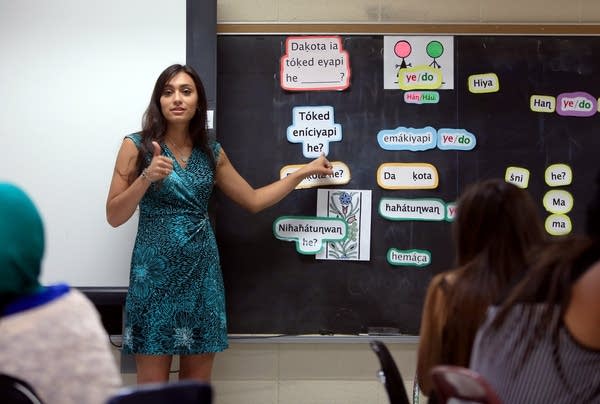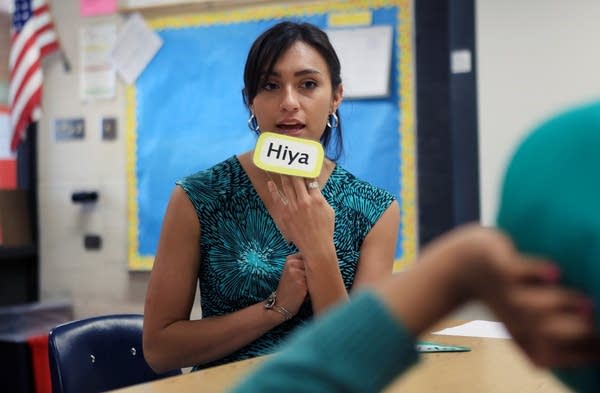Native tongue: Teacher brings Lakota language to 'Star Spangled Banner'

Go Deeper.
Create an account or log in to save stories.
Like this?
Thanks for liking this story! We have added it to a list of your favorite stories.
Lorna Her Many Horses grew up on South Dakota's Rosebud Indian Reservation, but she didn't master the language of her ancestors until she came to Minneapolis.
As a University of Minnesota undergraduate, she studied Dakota while earning a degree in education and occasionally teaching the misinformed about life on the reservation ("The number of times I've been asked if I ride a buffalo ... why would anyone think that?")

Now 23, Her Many Horses, who goes by the nickname Emmy, remains a teacher on many levels. She works for the Division of Indian Work, a program of the Greater Minneapolis Council of Churches. In a summer class at a Minneapolis school, she teaches the Dakota language, of which Lakota is a dialect.
During the regular school year, she and other language instructors work in the Minneapolis public schools to teach Ojibwa and Dakota in after-school sessions to elementary school American Indian children.
Turn Up Your Support
MPR News helps you turn down the noise and build shared understanding. Turn up your support for this public resource and keep trusted journalism accessible to all.

She's also used her language skills to build something fascinating and unique - a Lakota and Dakota version of "The Star Spangled Banner," created with the help of her language instructors at the University of Minnesota American Indian studies department as part of an effort to honor her four family members who are military veterans.
Hundreds of veterans have been given copies, although she said getting the words right was a challenge.
"It was quite a process, figuring out what words we needed to make up," she said of translating the national anthem. "We don't really have a word for 'rocket.'"

Click the audio button above to listen to Her Many Horses' story and her rendition of the national anthem.
Compare Lakota and English
The online encyclopedia Omniglot offers this look at the Lakota and English versions of Article 1 of the Universal Declaration of Human Rights.
Wičháša na wíŋyaŋ otóiyohi iglúhapi na iyéhaŋyaŋ wówažapi. Thaŋmáhmel slol'íč'iyapi na kičhíwičhowepi s'e kičhíčhuwapi kta héčha.
--Translated into Lakota Sioux by Joe Bellman
Translation
Each and every man and woman is free and has equal rights to things. They are sure of themselves in their mind, and they should treat each other as if they were siblings.
English version
All human beings are born free and equal in dignity and rights. They are endowed with reason and conscience and should act towards one another in a spirit of brotherhood.


